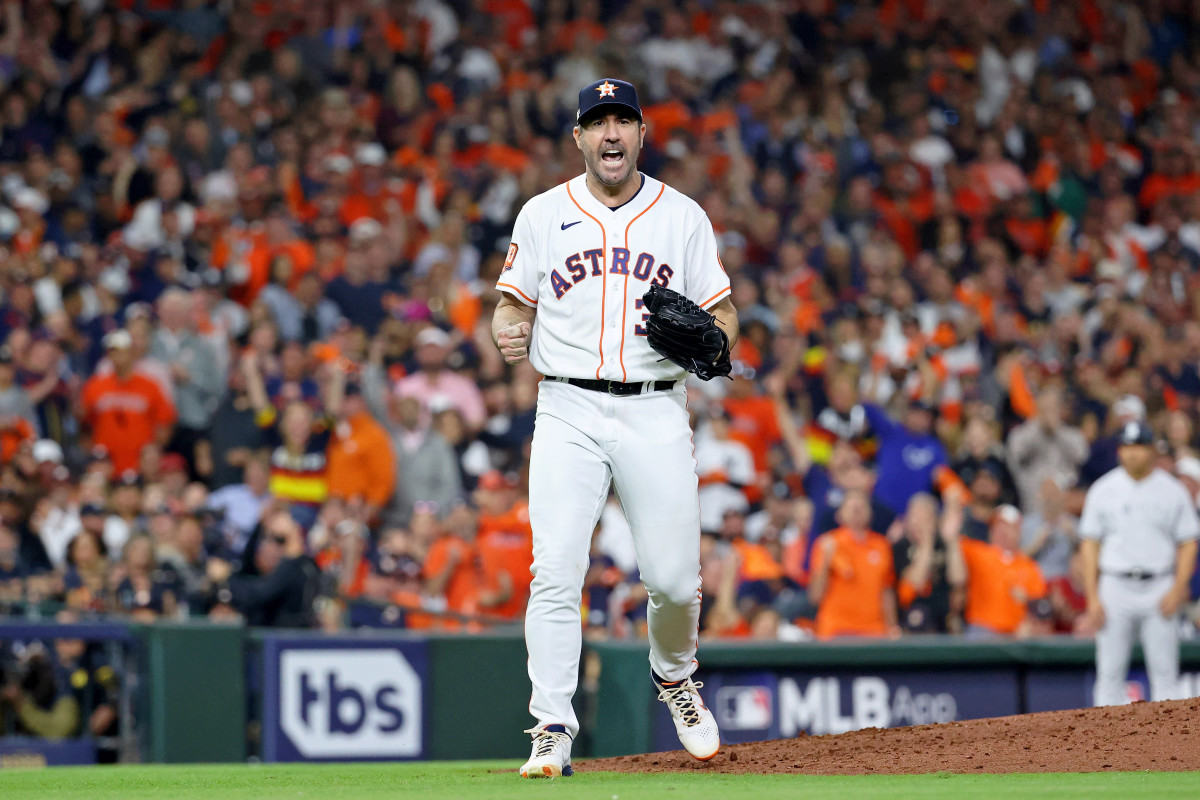The Mets Had No Choice but to Sign Justin Verlander
SAN DIEGO — Justin Verlander became a Met the minute the Rangers signed Jacob deGrom. It took three days to become official. A win-now team needed a front-end starter and the next best option meant getting into a long-term deal with Carlos Rodón.
Spending $86.8 million for two years of a pitcher who turns 40 in February is a cost the Mets needed to pay. Rodón involved more years at a risk and with a lower ceiling. The Mets made sure to keep Verlander just below Max Scherzer, his new and former teammate, as the most expensive pitcher in history—by about $30,000 per year.

Scherzer turns 39 in July. The Mets are paying $86 million next year for pitchers in their age 38 and 40 seasons—more than five entire team payrolls last season. No team since the 2013 Yankees, with Hiroki Kuroda and Andy Pettitte, has had two qualified starters age 38 or older. The Mets have tried this before, in ’04, with Tom Glavine and Al Leiter. The Yankees won a pennant in ’03 with Roger Clemens and David Wells.
Keep this in mind, though: Verlander and Scherzer are age outliers. They have lost nothing off their stuff. Where the Mets must be careful is building rotation depth to give them more days off and not pushing them deep into games to make sure they maintain that stuff. The Astros did this with Verlander last season, giving him five days of rest in a six-man rotation. The Dodgers have learned to treat Clayton Kershaw that way. Scherzer is still reliable but is no longer the same workhorse. He has thrown 110 pitches in a start once in the past two years.
The Mets’ mission will be to manage the innings of their co-aces to make sure they reach October healthy.
Verlander and Scherzer are highly competitive athletes who are friendly rivals. One source familiar with their time together in Detroit compared their competitiveness to Randy Johnson and Curt Schilling with the Diamondbacks. They pushed one another, but they also annoyed one another at times. One source familiar with the teammates said Schilling, for instance, would ask Johnson how much money he would get at autograph signing shows. Schilling would then say he would get $10,000 more to whatever Johnson said, just to tweak him.
Verlander has plenty of elite baseball left in him. His idol was Nolan Ryan, and for years Verlander has said he would like to pitch into his mid-40s the way Ryan did. The similarities don’t end there.
Back in 1988, Ryan was 41 years old when the Astros believed he wasn’t worth the money he was making. They offered him one year and $1.3 million. The Rangers had no room in their budget, but owner Eddie Chiles told GM Tom Grieve that if Ryan was available, the budget didn’t matter. The Rangers signed Ryan to a one-year contract for $1.8 million. He struck out 301 batters. One year turned into five years in Texas in which Ryan was 51–39 (.567)—his best win percentage among his four teams—and struck out 10.1 per nine innings—his best strikeout rate among his stops.
There is only one Ryan. But Verlander is a close comp because of his star power and his ability to keep going as a power pitcher. The Mets swapped out deGrom for Verlander, who posted a 1.75 ERA last season. It was a move they had to make.
